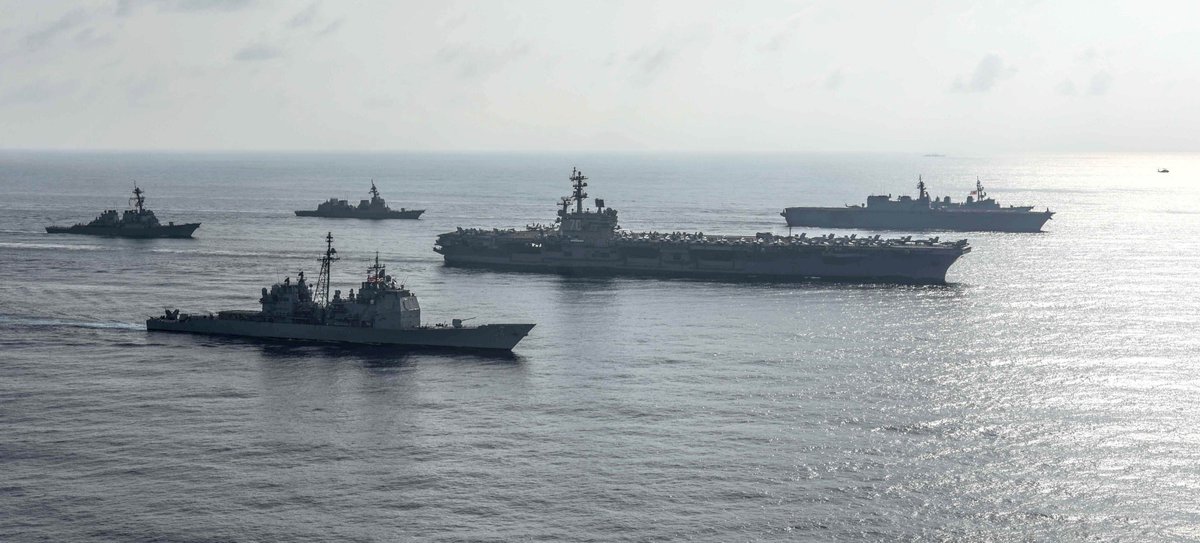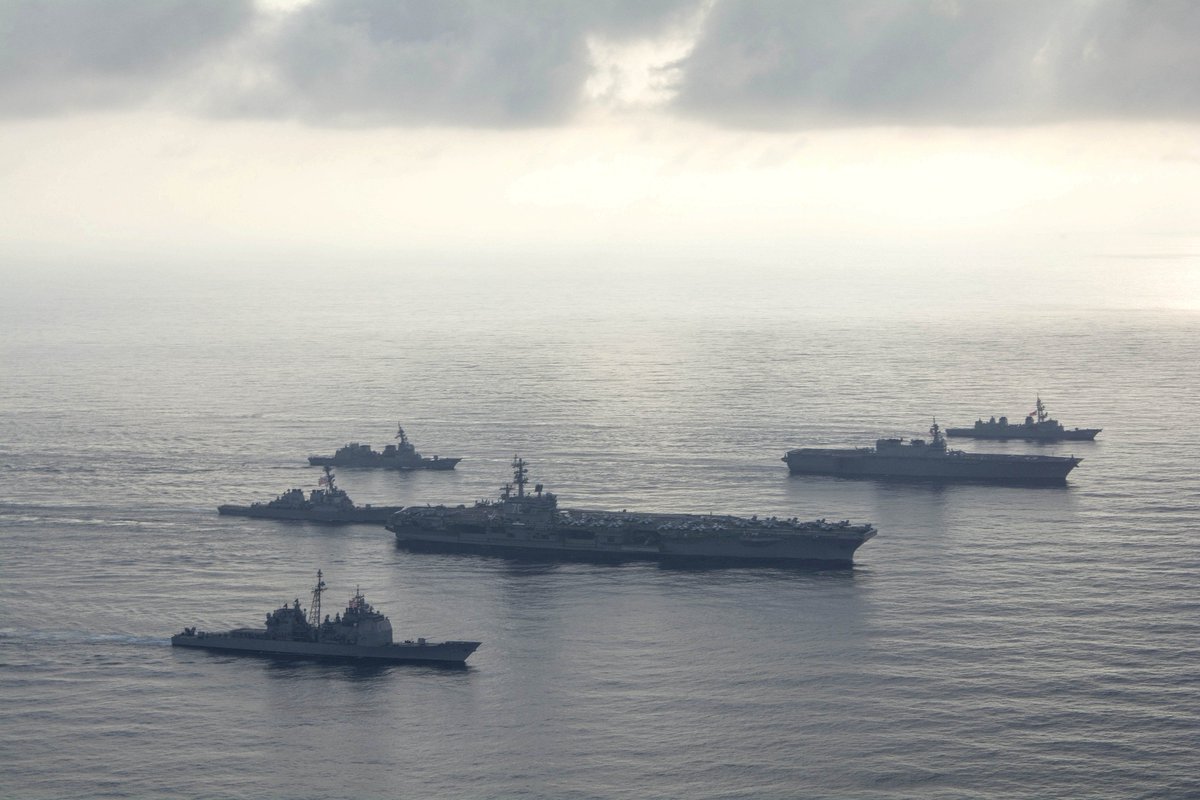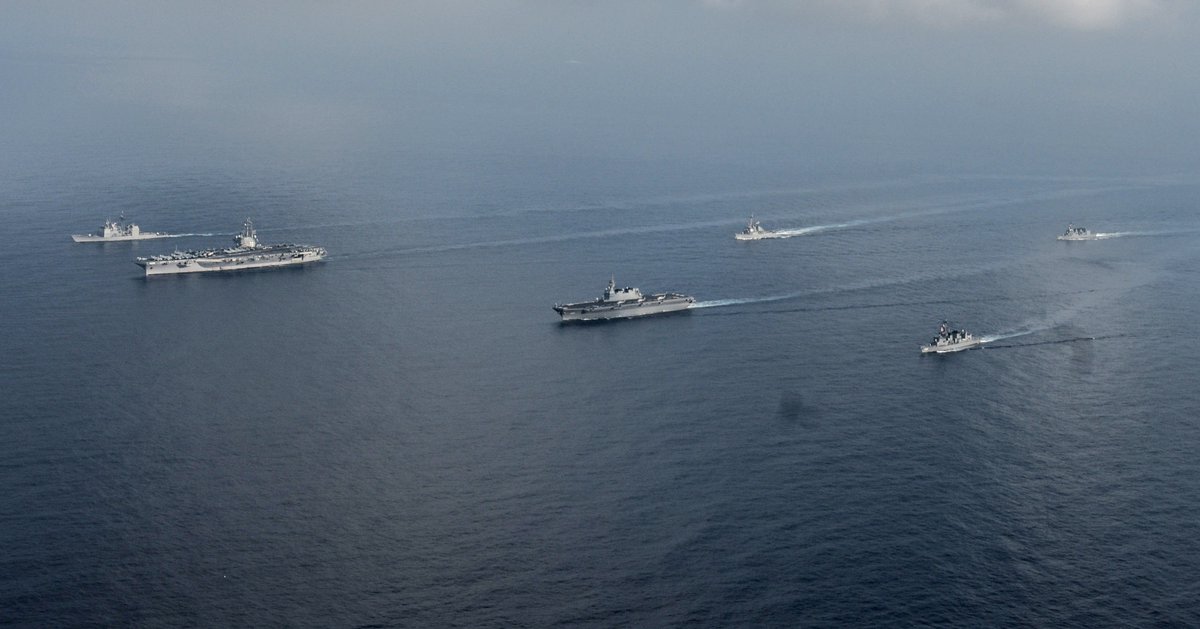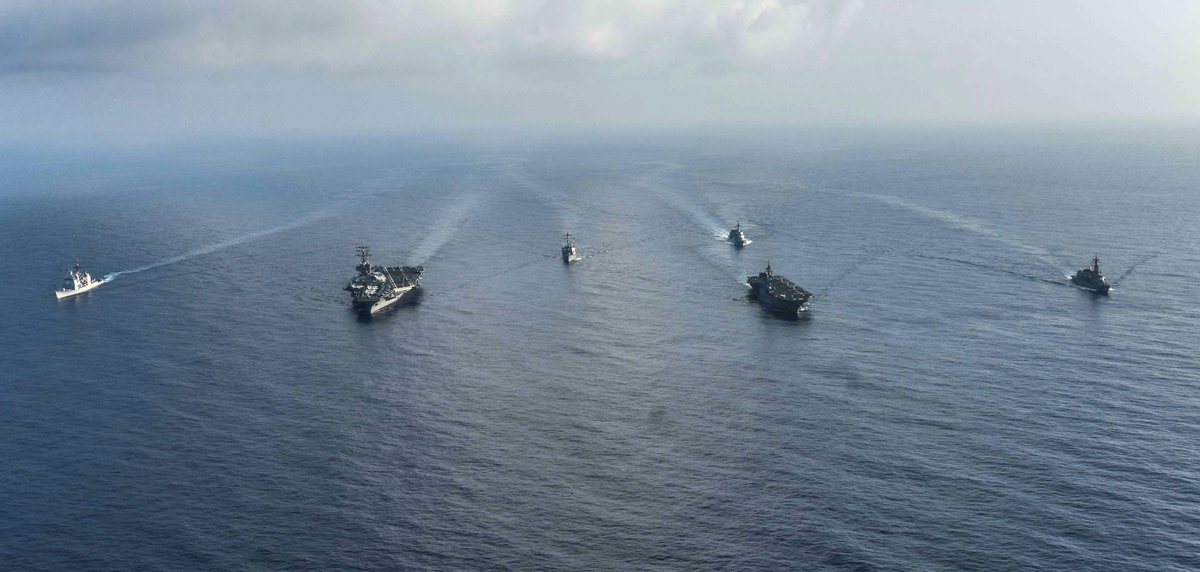You are using an out of date browser. It may not display this or other websites correctly.
You should upgrade or use an alternative browser.
You should upgrade or use an alternative browser.
SamuraiBlue
Captain
Art Imitates Life,
no?
actually you reminded me I meant to purchase
The Great Pacific War Hardcover – August 1, 1991
by
so that I can read it once I retire, gosh almost twenty years to go LOL
(OK the context for those who wouldn't know: that's a book which Isoroku Yamamoto read carefully)
Could you take your books as well as your opinions to another thread, I recommend the Fantasy section since you like those so much.
Mean while others who have a grasp of reality with some understanding of social/economic mechanism that push forward military conflicts discuss reality.
Oh don't forget your beloved copy of The Protocols of the Elders of Zion on your way out.
Jura The idiot
General
LOL! a creative oneCould you take your books as well as your opinions to another thread, I recommend the Fantasy section since you like those so much.
Mean while others who have a grasp of reality with some understanding of social/economic mechanism that push forward military conflicts discuss reality.
Oh don't forget your beloved copy of The Protocols of the Elders of Zion on your way out.
LOL! a creative one
Yeah, this must be the "cranky old bastards" thread?, that's why I'm here, LOL??
August 23, 2018
Lockheed offers Japan majority of work in plan for new fighter jet
The upgraded version of the F-22 would incorporate advanced features
TOKYO -- Lockheed Martin has proposed that Japanese companies be responsible for more than half of the development and production of a next-generation fighter jet that Japan wants to introduce in 2030, Nikkei learned Wednesday.
Lockheed is offering Japan an upgraded version of the existing F-22. The U.S. currently bans exports of the plane known as "the Raptor," which is considered the world's most powerful fighter, has stealth capabilities and is armed with eight air-to-air missiles.
The U.S. aircraft manufacturer's decision to open the production to Japan comes out of the belief that there is little risk of technology leaks. The company also says providing the jet to Japan would contribute to the security of Asia. If the share of work pans out as proposed, it would strengthen Japan's defense industry and the Japan-U.S. alliance.
Lockheed's proposal comes in response to concerns in Japan that American companies might monopolize the development and production of the upgraded warplane, leaving little room for Japanese partners' involvement. The company calls the plan a Japan-led framework.
The next-generation fighter will replace Japan's F-2 jets, scheduled to retire around 2030. Tokyo initially looked for ways for Japan Inc. to completely develop a successor on its own, hoping to boost the domestic defense industry's orders, but the idea proved unfeasible due to technological and cost hurdles.
The Japanese government sees Lockheed's proposal, which could deliver high performance at reduced development costs, as the most promising alternative.
The next-generation fighter program is estimated to cost about 6 trillion yen ($54.2 billion), including development, acquisition and maintenance. Some voices are citing a need to update the F-22, which has been deployed since around 2000, and Lockheed's plan has the benefit of lowering upgrade costs shouldered by the U.S.
Although Japan produced 60% of the jointly developed F-2, the U.S. handled engine development since Japan did not have the basic technology at the time. But Lockheed has expressed a willingness this time to shift development and production of new engines to major Japanese heavy machinery maker IHI in the future. If IHI's XF9-1 jet engine is adopted, Japanese companies could be responsible for more than 60% of the total work.
In addition, the exports of high--margin military equipment for the project could ease the U.S. trade deficit with Japan.
Mitsubishi Electric's fighter jet electronics system could be adopted, and Mitsubishi Heavy Industries will handle the development and production of wings, according to the plan. The aircraft's body, engines and the fighter system are to be made in the U.S., but Lockheed intends to use more Japanese-made components, incorporating them gradually until Japanese companies play a central role in development.
To hasten development, Lockheed will send Japan F-22s that have not been deployed by the U.S. Air Force so that it can grasp its performance in advance.
The updates will improve the plane's main wings and allow more fuel to be loaded, increasing the jet's range to about 2,200 km so it can be used to defend isolated islands and other missions.
Although the F-22 has the most advanced stealth abilities in the world, it requires a special coating that is laborious to maintain. Maintenance will be simplified by using the same material as the F-35 stealth fighter, making it easier to perform drills and deploy for battle.
One challenge is the cost. Lockheed estimates the price of the next-generation fighter will be far higher than the F-35's 15 billion yen-per-jet price tag. Lockheed estimates the price of a next-generation F-22 at about 24 billion yen if it is part of an order of 70 aircraft. Producing 140 of the jets could reduce the unit price to about 21 billion yen.
Well, I'd suggest they produce about 700, and we would buy 500!
Skywatcher
Captain
The actual, tangible items are a bunch of subscale tech demonstrators.
Sure, Japan might have a ground attack flying wing UCAV (which as has been pointed out, is a far different animal) concept, but that thing hasn't even flown yet (and it's light years away from remotely having any sort of air to air mission, combat or support).
Skywatcher
Captain
By the time the Franken Raptor enters Japanese IOC, the US will be well on its way with PCA and NGAD.Well, I'd suggest they produce about 700, and we would buy 500!
SamuraiBlue
Captain
No problem since Japan's goal is the same anyways.By the time the Franken Raptor enters Japanese IOC, the US will be well on its way with PCA and NGAD.
If you compare the US Air Force plan below;
and the JASDF i3 Fighter concept they are basically identical.
As for drones guess what the US plans are also the same with what I had proposed.
SO if you add one and one together.....
Jura The idiot
General
here's
What's in Japan's Record 2018 Defense Budget Request?
August 28, 2017
What's in Japan's Record 2018 Defense Budget Request?
August 28, 2017
(88.1e9*0.009006)/6 would mean about $132m per an F-35Japan’s defense spending continues to be driven by concerns about North Korea and Chinese maritime activities.
Last Tuesday, Japanese government officials stated that the Ministry of Defense will request a record 5,255 billion yen ($48.1 billion) for fiscal year 2018. Government officials noted that the budget request, which represents a 2.5 percent increase from the initial defense budget for fiscal 2017, is in response to the series of recent North Korean ballistic missile launches and increased Chinese activities in the East and South China Seas.
of the are , but officials indicated that money for: the introduction of the Aegis Ashore land-based missile defense system (amount unspecified because needs to be negotiated with the United States); SM-3 Block 2A intercept missiles (47.2 billion yen); PAC-3 MSE missiles (20.5 billion yen); the enhancement of the automatic warning and control system’s detection capacity (10.7 billion yen); the development of a next-generation radar capable of tracing stealth aircraft (19.6 billion yen); two destroyers that can remove sea mines (96.4 billion yen); six F-35A stealth fighters (88.1 billion yen); four Osprey tilt-rotor transport aircraft (45.7 billion yen) the maintenance of facilities for Self-Defense Forces units stationed on the southwestern islands of Okinawa (55.2 billion yen); the development of a high-speed glide bomb for use in contingencies on such islands (10 billion yen); the development of a system to monitor space activity (4.4 billion yen).
, predictably, is unhappy with such developments. Hua Chunying, spokesperson for China’s Ministry of Foreign Affairs stated, “We are aware of the reports [about Japan’s defense spending request] and are concerned about this.” Hua continued that Japan has been exaggerating the “China threat” to increase military spending, and that China should be on high alert to Japan’s moves and its real motives.
It’s curious that China feels the need to figure out Japan’s “real motives” when Japan explicitly explains that it is concerned by China and North Korea. In its annual white paper released earlier this month, a reflection of Japan’s commitment to transparency (within reason), the Japanese Ministry of Defense stated that Japan is “deeply concerned” over North Korea’s progress in developing intercontinental ballistic missiles. The advances present a “new level of threat” by the hermit kingdom.
The paper also stepped up its alarm towards China, expressing “strong concerns” over China’s activities in the East and South China Seas, where China “continues to display what may be described as a heavy-handed attitude, including its attempts to alter the status quo by force.”
If approved, it will be the sixth straight annual increase under Prime Minister Shinzo Abe. However, it could still be pared back by the Ministry of Finance, which has to also take into account increased spending for social welfare as Japan’s population ages.
Furthermore, Japan is constrained by , which runs until the end of fiscal 2018, that stipulates that annual defense budget increases, after subtracting the cost to maintain U.S. military bases, should be limited to 0.8 percent.
Jura The idiot
General
now noticed the tweet
Power Demo: 184, 's largest - uh, - has begun a 2-month South Asia tour, will arrive at Subic Bay Philippines today. First up, a group sail with RONALD CVN76 strike group. Fri in the South Sea




Power Demo: 184, 's largest - uh, - has begun a 2-month South Asia tour, will arrive at Subic Bay Philippines today. First up, a group sail with RONALD CVN76 strike group. Fri in the South Sea




